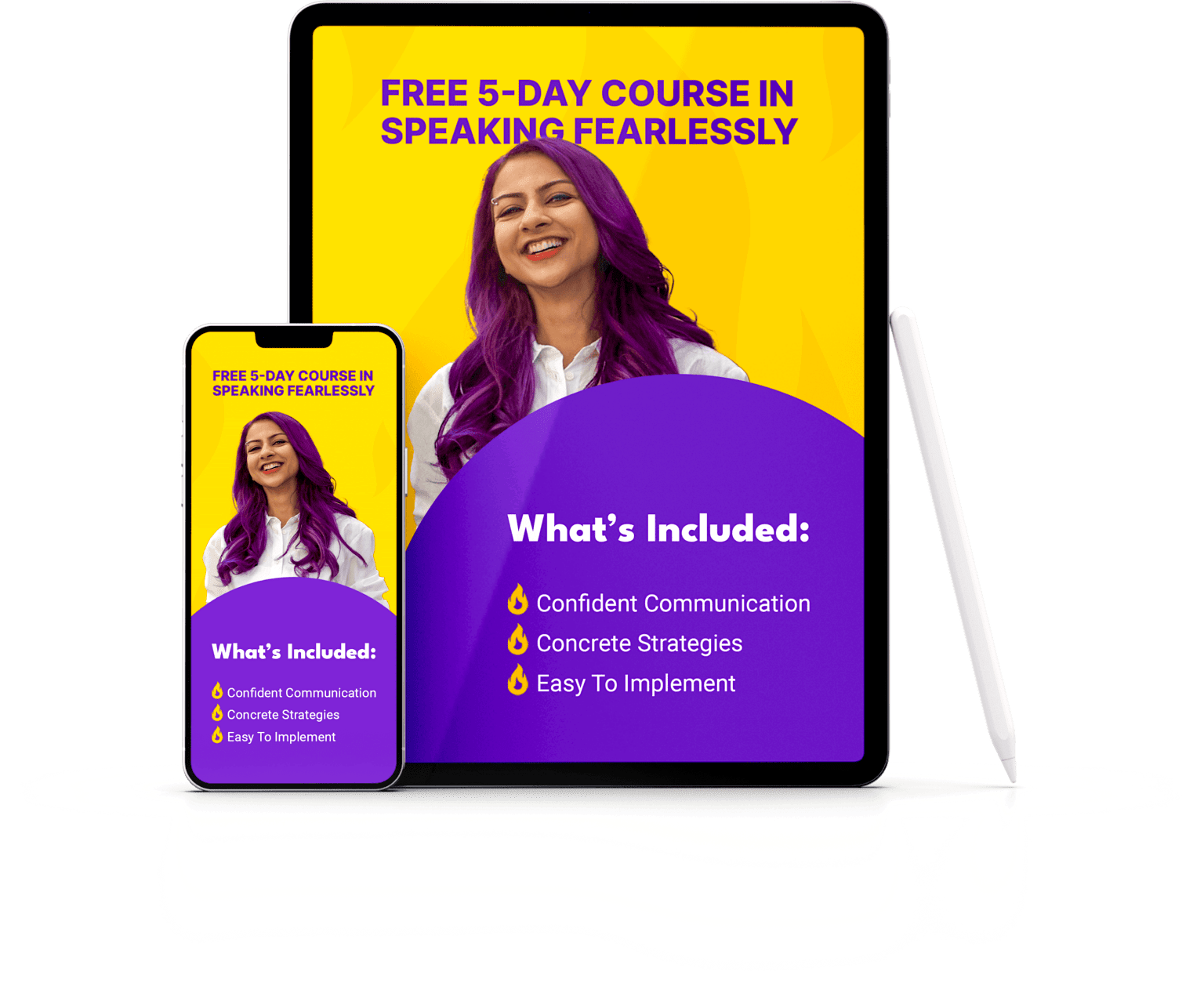We’ve all sat through extremely boring presentations. Ones where you can’t stop looking at the time and wonder why you said yes to being there in the first place. Or ones where you multitask so hard that you may as well not be there at all.
Here’s how to make sure you’re never the one delivering a terrible snoozefest of a presentation.
Table of Contents
1. Deeply Understand Your Audience
The foundation of any great presentation is a deep understanding of your audience. Whether you’re delivering an internal or external presentation, find out as much as possible about the audience, their expectations and knowledge levels. This insight will help you tailor your content to resonate with them, ensuring your message hits home. It will also ensure you have the right tone and vibe when you speak to them.

Photo by Matthew Osborn on Unsplash
Ask yourself three key questions:
- What kind of information would best help the audience?
- How will they best understand and remember the information?
- How will they use the information I’ll give them?

Photo by wes lewis on Unsplash
2. Start at the end: Define Your Key Takeaway
Every presentation should have a central message or a set of them. Define this key takeaway clearly before starting. This message will serve as your anchor throughout the creation process, ensuring your content remains focused and impactful.
Your message should serve as the guiding star throughout your presentation development as well as the actual delivery, ensuring your content remains focused and resonates with your audience. Anytime you find yourself going off-track in the development of your presentation, revisit the key message and ask yourself if you’re still serving the key message – and if not, course correct.
3. Don’t start with the powerpoint

Use a free flowing brainstorming session to put your talk together – first in the form of thoughts, stories and segments. Lean into assembling the presentation like a puzzle instead of starting at the beginning (which might be intimidating).
Starting with ideas also helps leave the possibilities open – maybe you don’t need a powerpoint. Maybe you can use unconventional aids like props, pictures, videos or even a whiteboard.
You’re there to deliver a message – not to deliver slides.

4. Structure your presentation
Once you have all your ideas, stories and data in one place, start structuring your presentation. There’s a method to the madness – or several. There are many ways to organize your thoughts – here is a suggested framework you could follow:
- Cold open: Begin with a captivating hook or a story to grab attention. Don’t fall into the trap of stating what the presentation will be about (boring).
- Chunking: Divide your content into 3 to 5 main points that support your key message. Each point should have its own clear and concise sub-messages.
- Content variety: Back up each main point with data, examples, stories, and visuals. Mix it up – don’t start becoming predictable in how you’re presenting data for each point.
- Transition: Smoothly transition between main points to maintain the flow of your presentation.
- Conclusion: Leave your audience with a call to action or thought-provoking question.
5. Craft Engaging Slides
Make your slides – if you choose to include them – stand out from others. Here are 3 neat techniques to use:
- Simplicity: Reduce text. You don’t need full sentences, only keywords.
- Theme: Choose a consistent color scheme and font style.
- Visuals: Use more visuals than necessary. Keep some slides full-image only to break up the monotony.
Pro-tip: Don’t use watermarked images that you don’t intend on buying – that leaves a bad impression on the audience. Instead, look for free images on sites like unsplash.com Super pro-tip: limit “generic” stock type of imagery so that you stand out instead of blending in.

Photo by Austin Distel on Unsplash
6. Amplify Content
Now that you have your ideas in place, amplify your key messages. Think of this as dressing up the bones of your presentation:
- Storytelling: Weave personal stories or case studies into your presentation. Stories resonate with emotions and make your content memorable. Get help with crafting your story here…
- Variation: Vary your content delivery with a mix of facts, statistics, examples, and rhetorical questions. This keeps your audience’s attention from wandering.
- Add humor, unexpected analogies and personality.
Think about starting with your story – the audience wants to know why they should listen to you and trust you. For presenting to an audience who is already familiar with you, consider telling an important story from your past or present that’s relevant to the presentation.
7. Strike the right tone
Don’t just simplify your content – adapt it to the audience. People don’t like being talked down to – but neither do they like getting lost in a sea of jargon.
When in doubt, use simple language for complex concepts – but plan on checking in with your audience in case they feel like you’re being too detailed, too simplistic or too complex.
Pro-tip: This is where backup slides come in handy.
8. Build in intentional engagement
This is where a lot of boring speakers go wrong. They forget to make their presentation a two-way conversation.
When you’re designing your slides, intentionally include interactive elements like polls, questions, or short activities to involve your audience and maintain their focus.
Audience interaction shouldn’t be an afterthought – it should be part of your presentation from the start. Engaged audiences are more likely to retain and act upon the information you present.
And you can involve both in-person and virtual audiences. The more involved the audience feels, the less likely they will wander into their inboxes while you’re speaking.

Pro-tip: engage the audience before you start a virtual presentation. Start by asking them some key questions to encourage early engagement. Super pro tip: Do this before you’ve started sharing your screen so that people see and remember your face before it shrinks to a tiny box next to your slides.
9. Rehearse and Refine
Don’t fall into the trap of “I’ll wing it”.
Knowing your presentation inside out is key. Practice – and record yourself while you practice. I’d advise against practicing into a mirror as it’s not intuitive and might make you more self-conscious. Don’t practice blindly – strategically focus on your tone, pace, energy and body language.
Watch yourself back and improve one of those key elements in every subsequent practice.
A lot of people resist rehearsing because they don’t want to sound rehearsed. However, the truth is you only sound rehearsed if you haven’t rehearsed enough.
10. To memorize or not to memorize
When you start rehearsing, you’ll feel tempted to read off your slides.
Resist that temptation. People can read your slides faster than you can say them out loud.
Also – if you really used minimal words on your slides, you may not have anything to read. This brings us to the next dilemma – you probably need some form of notes to stay on track and remember all the details you wanted to cover.
It’s perfectly ok to start rehearsing with these notes. A watchout: make notes with keywords instead of fully written out sentences. This will help as you won’t be tempted to read off your notes. Depending on how much time you have before your presentation, you might either be able to internalize these notes, or even take them with you.
TLDR: You may never need to memorize the presentation unless you’re doing a TEDx talk – in which case it’s better to memorize it if possible so that you can be sure of hitting the right time limit, cadence and emphasis.

Photo by Daniel Chekalov on Unsplash
11. Master Nonverbal Communication
When you practice, visualize the audience and emulate similar circumstances as the one you’ll be in when you’re presenting. Channel your inner TED speaker:
- Eye Contact: Maintain eye contact with different sections of your audience to create a connection.
- Gestures: Use natural and purposeful gestures to emphasize points. Avoid excessive or distracting movements.
- Posture: Stand tall with relaxed shoulders. Good posture exudes confidence and engages the audience.
- Voice Modulation: Vary your tone, pitch, and pace to keep your audience engaged and convey enthusiasm.
12. Revisit and Revise
After delivering your presentation, seek feedback from colleagues or peers. Constructive criticism helps you identify areas for improvement and refine your content for future engagements.
Make sure you record yourself so that you can evaluate how you did – learn to analyze your own performance through the lenses of your energy, voice and body language.
Also get into the habit of debriefing with yourself after each presentation – note what you did well and what you can improve on. Pro-tip: do not skip out on recognizing and noting what you did well. The best way to become exceptional is to maximize your strengths instead of plugging opportunity areas.

Photo by Chris Montgomery on Unsplash
13. Embrace the Feedback Loop
Use the feedback you receive to continuously enhance your presentation skills. Every presentation is an opportunity to learn and grow. Apply what you’ve learned to your next presentation, and the cycle of improvement continues.
Crafting an engaging presentation is a blend of art and science. By weaving storytelling, visuals, interaction, and emotion into a seamless narrative, you create an experience that resonates long after the applause fades. Remember, the goal is not just to deliver information, but to spark curiosity, inspire change, and leave an indelible mark on the hearts and minds of your audience
If you’re looking for more personalized help, check out how to work with me 1:1.
And if you enjoyed this article, you may also like How to Overcome Stage Fright.



